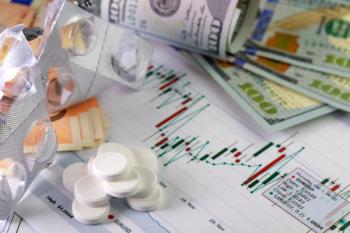
- Drug Topics August 2020
- Volume 164
- Issue 8
To “Buy American” Generic Drugs, Pharmacists Must Be Adequately Reimbursed
Why do we pharmacists buy generics from foreign manufacturers? The answer is pure and simple: the cost.
After logging over 166,000 miles on her 2011 Toyota RAV4, my wife, Denise, decided she needed a new car. All 3 kids are out of college and have their own homes, so we decided it was time for her to treat herself. She settled on a bright blue 2020 Honda CR-V. Despite being a Japanese model, the 2020 Honda CR-V is also manufactured in North American plants, in Marysville and East Liberty, Ohio; Greensburg, Indiana; and Ontario, Canada. I wish we could say the same about the drugs we dispense in our pharmacies; instead of a foreign brand made in America, we have American brands made in foreign countries.
A lot of noise has been made the past 6 months about buying our medical supplies; namely, personal protective equipment and pharmaceuticals. So much of our drug supply—especially generics, which account for the majority of what we community pharmacists dispense daily—is manufactured in foreign countries. Since the 1990s, US companies have increasingly imported pharmaceutical products from India and China, where ingredients are cheaper and manufacturing is subject to fewer regulations and significantly less FDA oversight. Because of this, the United States relies heavily on India and China for our generics, which I routinely dispense.
“Buy American” is shouted from the rooftops. I’m all for it too; however, the question becomes “Why do we pharmacists buy generics from these manufacturers?” The answer is pure and simple: It is the cost. There are no reasonably priced alternatives, given the ridiculously low level of payment from many of the insur- ance companies and managed care organizations (MCOs).
Recently, while working “on the bench,” I paid particular attention to the reimbursement levels for very common drugs. One MCO reimbursed 79 cents for a 30-day prescription of lisinopril 20 mg. According to the 2020 Cost of Dispensing Study, it costs $12.40 for a pharmacist to dispense a prescription.1 How much longer can independent pharmacists sustain such reimbursements? That is why we dispense generics that originate from China and India.
In Blair County, Pennsylvania, where I have spent my professional career, we’ve seen 14 independent pharmacies close in the past 10 years. As I said in a column in September 2019, quoting Dr Martin Luther King Jr, “We must learn to live together as brothers or perish together as fools.” The demise of the independent pharmacies is the canary in the coal mine, warning that more and more job opportunities for pharmacists are at risk.
I am all for buying American and bringing as much manufacturing of the medical necessities as possible to our shores so that we are no longer at the mercy of the overseas governments. We have the ability to manufacture all our medical supplies, including generic drugs. For that to become a reality, the government, which spent $325 billion in 2015 on drugs, must ensure proper reimbursement for these American-made generic drugs. Pharmacists need to be reimbursed adequately for every prescription dispensed with a reasonable fee for service.
Direct and indirect remuneration fees need to go away immediately. The pricing schemes of average wholesale price, wholesale acquisition cost, national average drug acquisition cost, and Affordable Care Act–weighted-average manufacturer price must fall into line to reflect exactly what pharmacies pay for these drugs. Because we are getting poorly reimbursed for the cheap overseas generics, we need reassurance that when we are mandated to buy American generics, which I’m sure will be slightly more expensive, we will not take any more of a financial hit.
Denise loves her new car, and the Honda dealer does not have to worry about clawing back on the check we wrote. Isn’t that supposed to be how a business transaction works?
Articles in this issue
over 5 years ago
Pandemic Presents Unique Challenges for ADHD Managementover 5 years ago
Health Crisis Highlights Value of Pharmacy Compoundingover 5 years ago
Pharmacy Unions Push for Improvementsover 5 years ago
Investigators Find COVID-19 Connection in Vasculitisover 5 years ago
Protect Your Pharmacy’s Online Presenceover 5 years ago
Communicating Facts Can Help Boost HPV Vaccination Ratesover 5 years ago
Brace for Flu Season as COVID-19 Pandemic Persistsover 5 years ago
Managing Drug Diversion Amid PandemicNewsletter
Pharmacy practice is always changing. Stay ahead of the curve with the Drug Topics newsletter and get the latest drug information, industry trends, and patient care tips.











































































































































































































